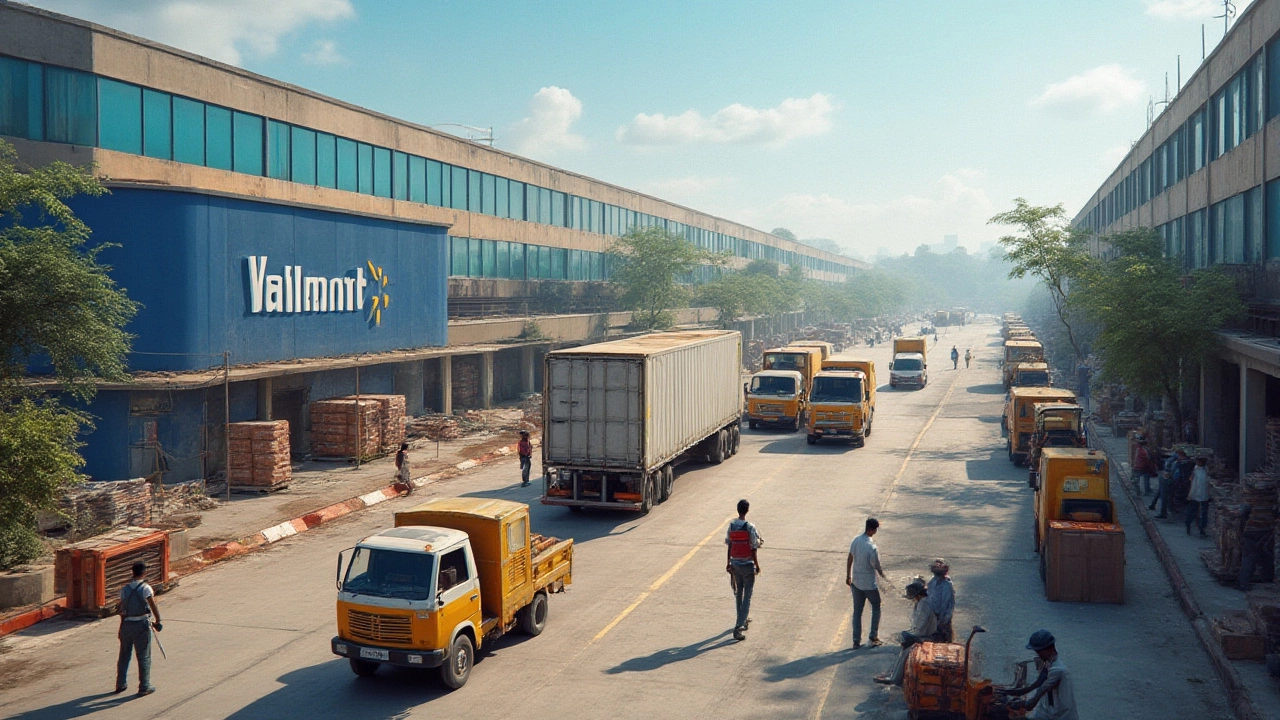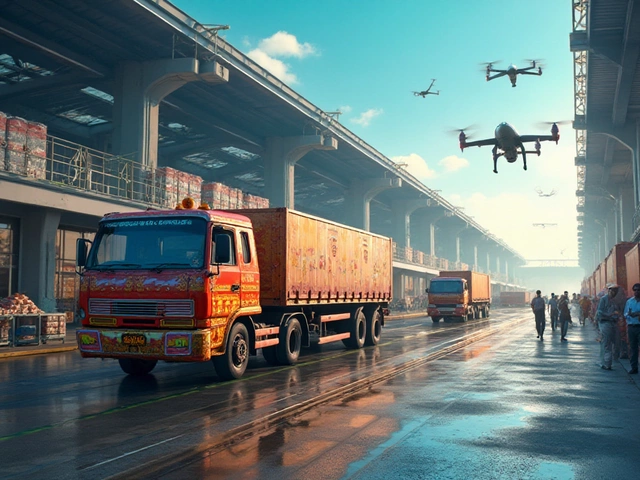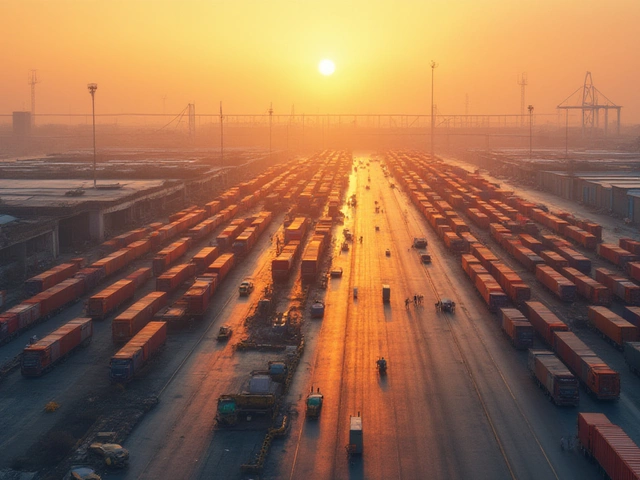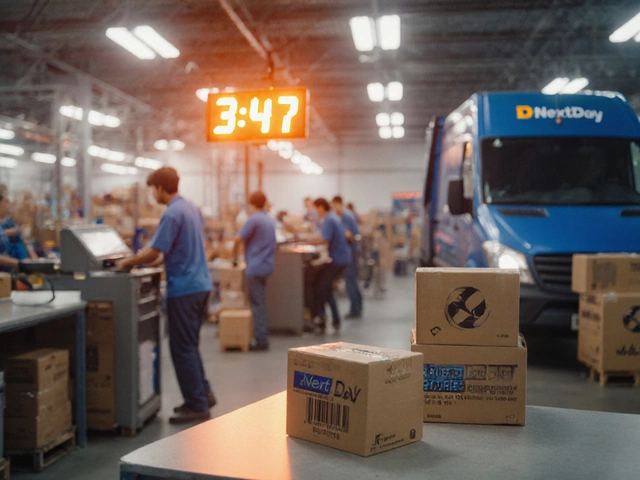Every time you order a kitchen gadget online and get it within two days, or see grocery shelves always restocked, there’s a sophisticated logistics system at work. Logistics isn't just about trucks and warehouses—it's about moving mountains of products with clockwork precision. Ever wonder, “What’s a real example of a logistics system that keeps massive operations running?” Here’s a look behind the curtain at how some of the world’s retail titans keep stuff flowing from factories to front doors, almost like magic, but with way more spreadsheets and forklifts.
The Brain of Retail: How a Logistics System Starts
A high-functioning logistics system is almost like the nervous system for a giant—you don’t notice it unless something’s wrong. Let’s zoom in on how Walmart, arguably the global heavyweight in retail logistics, makes its complex operation look effortless. Walmart’s logistics system is a web of distribution centers, advanced inventory management, an army of delivery trucks, and a battalion of logistics planners.
Kick things off at the supplier level. Most major brands, whether it’s electronics or breakfast cereal, ship their products to the nearest Walmart distribution center (DC), of which there are over 150 in the U.S. alone. These DCs are sprawling, high-tech warehouses—some the size of 24 football fields. When inventory comes in, it’s immediately checked using barcode scanners and radio-frequency identification (RFID) tags. Walmart invested early in this tech, and it’s paid back in fresher produce and less overstock cluttering storage. In fact, RFID tags helped reduce stock-outs at stores by up to 16% compared to the old-fashioned way, according to a University of Arkansas study in 2014—a number that’s only improved as tech advanced.
Orders from stores come in via a real-time digital network, and the DC’s inventory software automatically matches what’s needed with what’s in stock. If you’ve ever wondered how your local store knows exactly when Cheetos are running low, it’s because each sale instantly pings the logistics management system. Retail staff don’t have to guess when to reorder; the system does it for them, freeing up time for things like helping you find the cereal aisle. The brilliance of this setup is the ability to predict demand, cut down on waste, and boost customer satisfaction.
Warehouse Ballet: Inside Distribution Centers
Distribution centers aren’t just giant storage boxes. These are mechanical ballets—picture hundreds of people, forklifts, and crawling conveyor belts moving in perfect sync. If you’re into stats, consider this: the average Walmart DC handles upwards of 200 trailers daily and can ship as many as 1.5 million cases of goods every week. Each case’s arrival, location, and departure is tracked down to the second. The software signals workers where to pick up an item, and often, robot-assisted vehicles or computer-activated conveyor lines get those products where they need to go.
Let’s slice into an example. A typical Walmart DC supports up to 100 stores. Orders from all these stores are bundled, sorted, and staged for loading at specific docking stations. Ever seen a Tetris master at work? That’s what truck loading looks like—boxes stacked to maximize cubic space, reduce breakage, and cut transportation costs. Each distribution center is set up in a ‘hub-and-spoke’ model. This means DCs act as central hubs and the stores as spokes radiating outward.
Technology is king here. Walmart’s warehouse management system (WMS) figures out each shift’s workflow. Who does what, in what order, and how to avoid traffic jams in the aisles—all decided before a single box gets touched. The interaction between human workers and automation matters—and here’s the cool part: some DCs use automated storage and retrieval systems (AS/RS), where robotic cranes zip up and down 40-foot shelves grabbing merchandise. These robots don’t need coffee breaks, and they help reduce injury rates for workers.
Now, let’s throw in the wild card: unpredictable events. Maybe a snowstorm halts trucks, or there’s a spike in demand for patio furniture during an unexpected heatwave. The system adapts by rerouting shipments, shifting workloads, or tapping backup inventory. Having backup plans is table stakes in logistics, and big players like Walmart excel here.
| Fact/Statistic | Details |
|---|---|
| U.S. Distribution Centers | Over 150 major DCs as of 2024 |
| Average DC Truck Loads Per Day | Up to 200 |
| Cases Shipped Weekly (avg. DC) | 1.5 million |
| Stock-out Reduction (RFID) | Up to 16% |
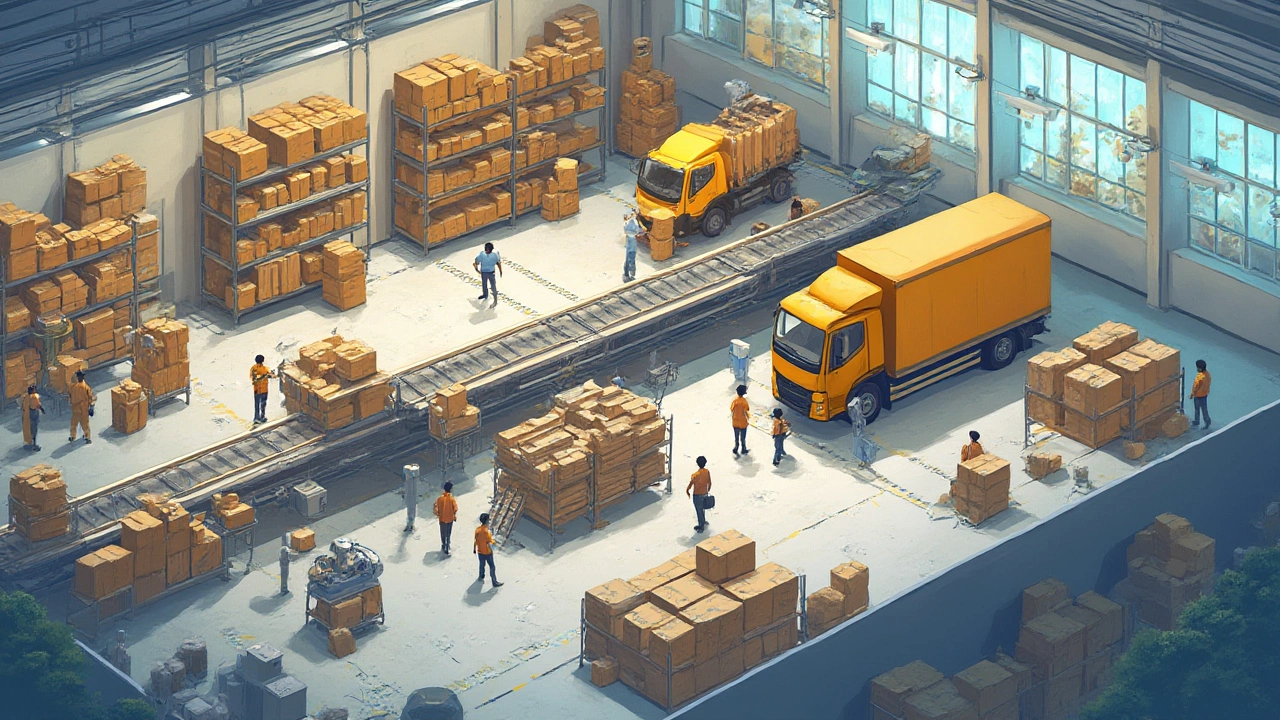
On the Road: How Goods Get Where They’re Needed
Getting products from distribution centers to stores or customers’ doorsteps is where the logistics system really proves its worth. Let’s keep following Walmart’s chain, but know these same ideas show up at companies like Amazon, Target, and Tesco as well. The core challenge: every store might have different needs, there’s weather, traffic, and the absolute requirement that fresh eggs stay cold and iPads don’t get crushed en route.
Walmart runs its own vast fleet: over 9,000 tractors, 80,000 trailers, and more than 12,000 licensed drivers as of 2023. That’s bigger than some small countries’ militaries. Drivers pick up mixed loads—groceries, electronics, home goods—organized to unload in the order stores appear on their route. If a truck is three minutes late at one stop, the domino effect can spoil the carefully balanced schedule. GPS tracking, route optimization algorithms, and instant messaging keep things flowing.
Retailers are obsessive about ‘last mile delivery’—getting goods the final leg from distribution or store to the customer. While Walmart mostly restocks stores, its e-commerce push means more home deliveries. Third-party couriers and local delivery partners come into play here, all plugged into the same logistics brain. Think back to the holidays: for all the chaos, the bulk of packages show up on time because the system’s been primed for spikes. For 2024, industry data from the Council of Supply Chain Management Professionals pegs U.S. logistics costs at about 8% of GDP, a staggering $2 trillion+ annually—not just Walmart, but the entire country’s network of goods in motion.
Here’s a tip: if you want your online orders faster, try to buy from retailers whose warehouses are physically closer to your location. That’s smart logistics in action—less distance to cover, quicker deliveries, lower emissions, and lower twisty shipping costs.
Amazon’s Prime service, for example, positions popular products in fulfillment centers near major cities, so what you see as “two-day delivery” is often just a short-hop away. Walmart is rapidly matching this model with its “Store Pickup” and “Express Delivery” options, pulling inventory from local stores so you don’t wait for trucks to arrive from hundreds of miles away. As data streams in—customer orders, weather, fuel costs—the system fine-tunes routes and inventory levels down to individual hours.
“The real innovation in logistics is about using technology to make something invisible appear effortless to the customer,” said Tom Ward, Walmart’s head of U.S. e-commerce, in a 2024 interview with Logistics Management.
Beyond Retail: Tips to Build or Improve Any Logistics System
So, what can you learn from retail megasystems if you’re managing a smaller warehouse, an online store, or even running logistics for a charity drive? The core lessons transfer across any size of business. Start with integration—link inventory, ordering, and shipping into one dashboard. Software solutions, like SAP or Oracle’s logistics suites, bring this to smaller players now, not just billion-dollar behemoths. Even tiny eBay shops can automate order matching and label printing with tools like ShipStation or EasyShip. Reduce manual tracking. Track every box, pallet, or crate with barcodes or basic RFID tags—it’s way easier today than even five years ago. Human error drops, and customer updates get accurate.
Another tip: don’t underestimate the power of route optimization, whether you’ve got a fleet of fifty delivery vans or just your own hatchback. There are apps out there—Route4Me, Circuit, or even Google Maps—that help you sequence stops the smartest way. Gas and time savings quickly add up. Partner up. If you can’t afford your own trucks or a big warehouse, 3PL (third-party logistics) companies let you rent space, trucks, or even the whole picking and packing operation. For many growing retailers, outsourcing fulfillment is the difference between surviving and burning out.
Keeping customers updated with real-time tracking isn’t just a “nice to have”—it reduces anxiety and cuts the number of “Where’s my order?” emails. Just look at how Domino’s Pizza’s order-tracking screen became a sensation; people love to know what’s happening behind the scenes. Test and tweak. Even the slickest logistics systems have to adapt—peak shopping times, weather disruptions, or even quirks of local traffic. Run experiments, compare delivery times, find what slows you down, and fix it. The best-run systems never settle, and neither should you.
If you want to geek out over efficiency, here’s a stat for the road: DHL, one of the world’s largest shippers, claims that just optimizing the route their trucks drive each day shaved off over 20 million road miles in a single year. Less fuel, lower emissions, better for everyone’s bottom line. Now scale that idea down to your next delivery run or up to a national retailer—same principle, just more zeroes.
Logistics isn’t glamorous. But when you see how even the biggest companies break it down to clear processes, lean tech, and fast adaptation, it’s easy to take a few ideas home. Whether you’re trying to ship socks to customers or get relief supplies out after a storm, the *logistics system example* behind your operation can make or break your success. That’s not just theory—it’s the real secret sauce of commerce.
